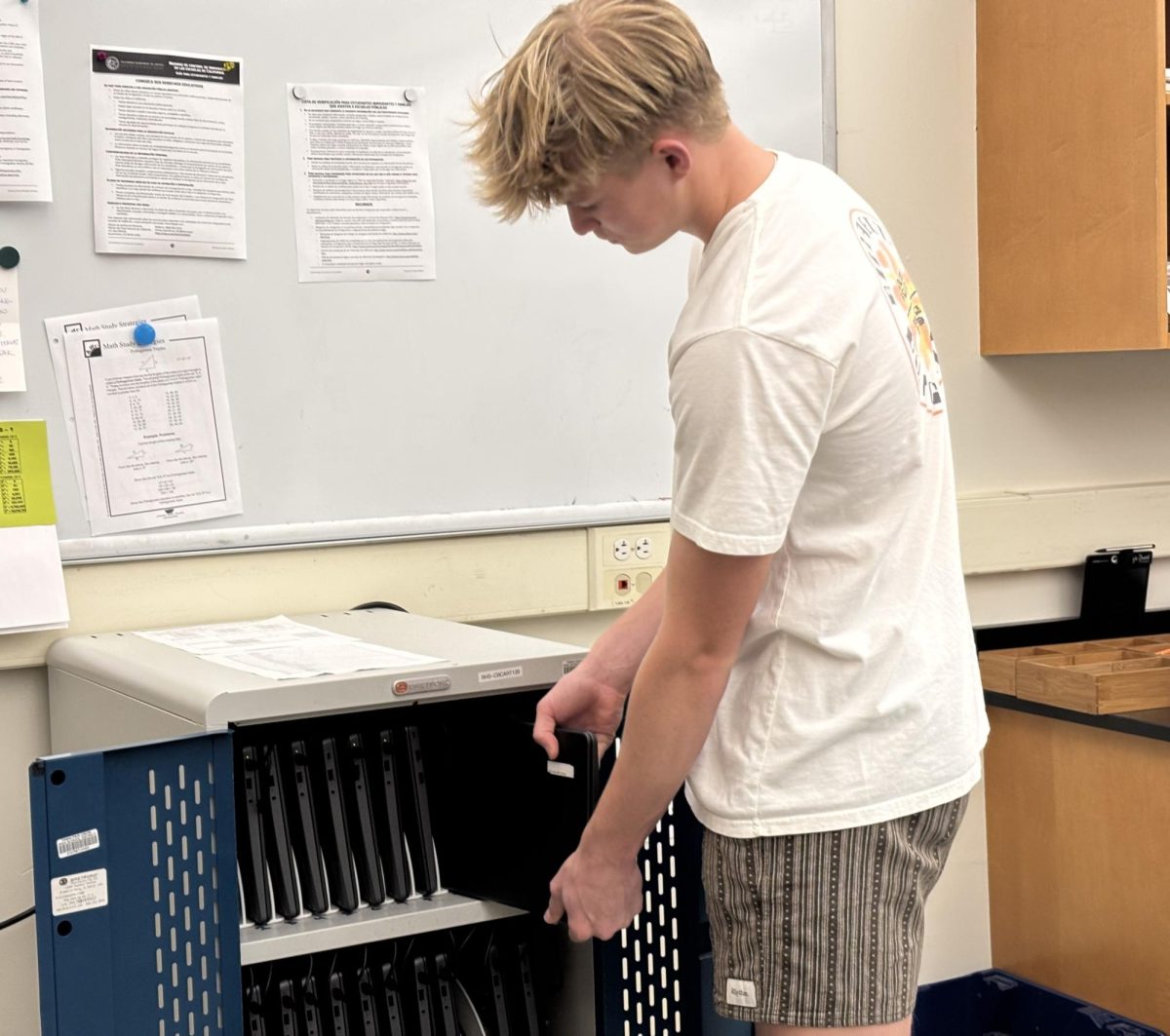The district’s Classified Staff Union came to an agreement within their contact with the Tamalpais Union High School District (TUHSD) board on May 9 which allows Drake High School’s student newspaper, the Jolly Roger, to print their backdated issues and one final issue this year through an outside printer.
Previously, a clause within the contract of the California Schools Employee Association (CSEA), of which the TUHSD Classified Staff Union is a chapter, had prevented the Jolly Roger from printing since January.
This clause stated that if a position held by a classified staff member is eliminated, that position can not be outsourced for 39 months. The Jolly Roger previously printed their paper through the District Print Shop, but when the TUHSD board eliminated the positions of Print Shop Coordinator and Printer, the clause was enacted.

The new contract, which was approved on May 9, allows certain materials, including the Jolly Roger, to be printed outside of the district if the district does not have the capability to print them, while the rest of the work will be distributed to the secretarial staff.
With these added duties, the 15 secretaries who saw their work-year shortened by six days due to budget cuts in 2010 will gain back those lost days. These secretaries will have only two additional days this school year, due to the few remaining days in the school year, but in following years will have the full six days more.
If the secretaries are not able to do the work due to more pressing commitments, other CSEA employees can be asked to do it, and in doing so would receive a five percent pay differential for this “out-of-class” work.
“We’ve essentially said, ‘we know it’s going to take more time, here’s more time. Here’s six more days.’ To the other people who didn’t increase their work year, we said ‘we know you already got a lot on your plate. If we ask you to do extra, we are going to pay you extra,’” said Lars Christensen, TUHSD’s Assistant Superintendent of Human Resources.
The district decided to close the print shop in early fall, according to Christensen, and it was officially closed on Dec. 6, 2016. The decision was made due to annual cost of the print shop, which totalled $185,000 a year for the two employees’ salaries and benefits, along with the cost of materials. The district also felt that the necessity for the print shop had lessened, as many within the district can print materials from their desks.
A main holdup in the negotiating process, aside from scheduling, was the CSEA’s wish that the district reinstate the position of Service Center Specialist (a position that was eliminated in 2010) at Redwood, Drake and Tam High Schools to do the work that would no longer be done by the District Print Shop, according to Christenson.
“We weren’t going to lay two people off to hire three back,” Christenson said. “It was that simple, the numbers just didn’t make sense.”
Christenson said that the district is satisfied with the conclusion that the two parties came to.
“We think it’s very fair,” he said. “It suits our needs in that we’re no longer suffering a $185,000 a year loss and we don’t have to buy a bunch of new equipment that would probably cost us six figures too. We feel good about restoring the work days to the secretaries who lost them a few years ago, and we feel like the work we need to do will now get done.”
CSEA chapter president Tim Mullery said it was never the CSEA’s intention to not have the Jolly Roger print, rather the decision that the district made put them in the hard position to do so. He said that he feels bad about the way the Jolly Roger was affected, but doesn’t feel this was CSEA’s fault in any way.
Kris Knutsen, Junior Past President of the CSEA and member of the negotiating team, said that in the process of negotiations, both teams come together to fill in gaps of understanding that each party may have about the other, and to come to a fair solution that betters the schools. The motive of both sides, he said, is to create a dialogue that leads to doing the right thing by students and parents.
“[The CSEA] never want[s] to impact students in a negative way, and our hearts are in the right place,” Knutsen said. “But it’s not just one group looking out for its self-interest and another group looking out for what they think is best for the district. Even though we are on other sides of the negotiating table, we’re a team, we’re coming together.”
Christenson places the blame equally on the district and the CSEA for the holdups in negotiations.
“I think it’s only fair to say, from the District perspective, we could have been more expeditious in getting it done, but I think it’s also fair to CSEA also could have granted the exception for that student newspaper to be printed off site,” Christenson said. “I think both parties bear equal responsibility for the legitimate frustration the students felt.”
Shortly before the district came to an official agreement with the CSEA, a tentative agreement was made between the Jolly Roger and the CSEA that permitted the paper to print outside the district. This was because the CSEA felt that a fair offer had been made by the district, and there was no point in continuing to hold up papers’ printing, according to Mullery.
Although the two parties have now come to an agreement which allows the paper to print, Jolly Roger Editor-in-Chief Aaron Silverstein said that the Jolly Roger staff had no input on the decision-making process.
Additionally, Silverstein feels that the district has not created a way to fund the Jolly Roger in the future, as their printing costs have doubled since moving to an outside printer.
“[The TUHSD board has] not come up with a better solution. And when we talk to the district board, they just say, ‘Ok we’ll figure it out.’ But they haven’t come up with a solution yet,” Silverstein said.
Mullery expressed concern for the Jolly Roger’s financial situation, and noted that they should reach out to the district for financial support as they were responsible for the decision that led to this lack of sufficient funding.
However, Christenson said that the Educational Services branch of the TUHSD would work with the Drake principal Liz Seabury to find a solution to funding issues, should they arise.
“Like every other endeavor on high school campus, we’ll work with our sites to determine how best to fund that. So we’re not going to leave the Jolly Roger high and dry,” Christenson said.
In order to cut costs, the Jolly Roger has been forced to combine their last two issues into one 32-page issue, according to Silverstein.
“We need a long term solution from the district that is funding supplemental costs they added,” Silverstein said. “That hasn’t been brought to the table.”






